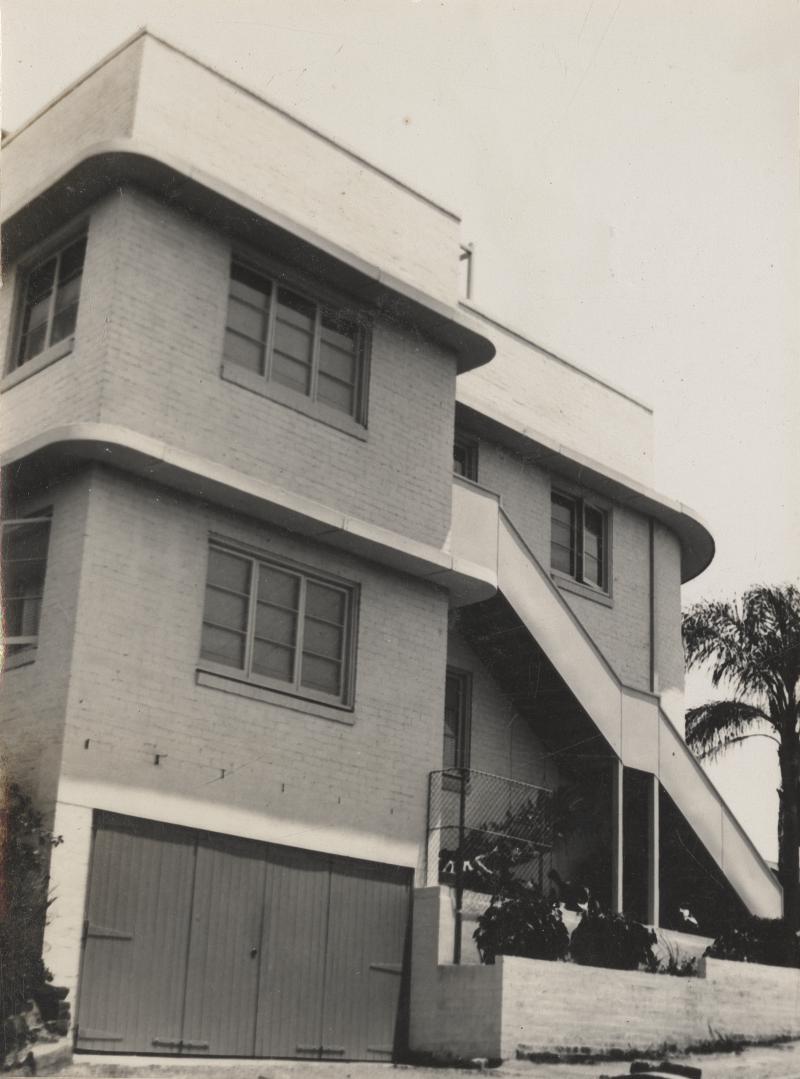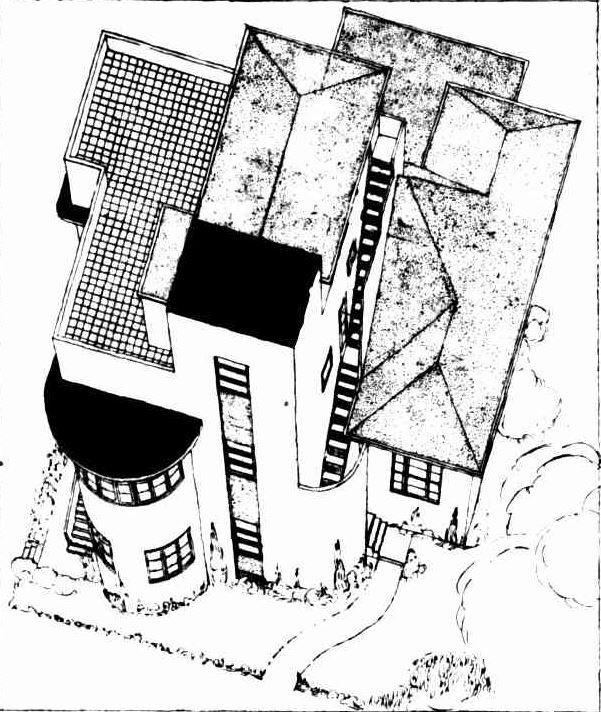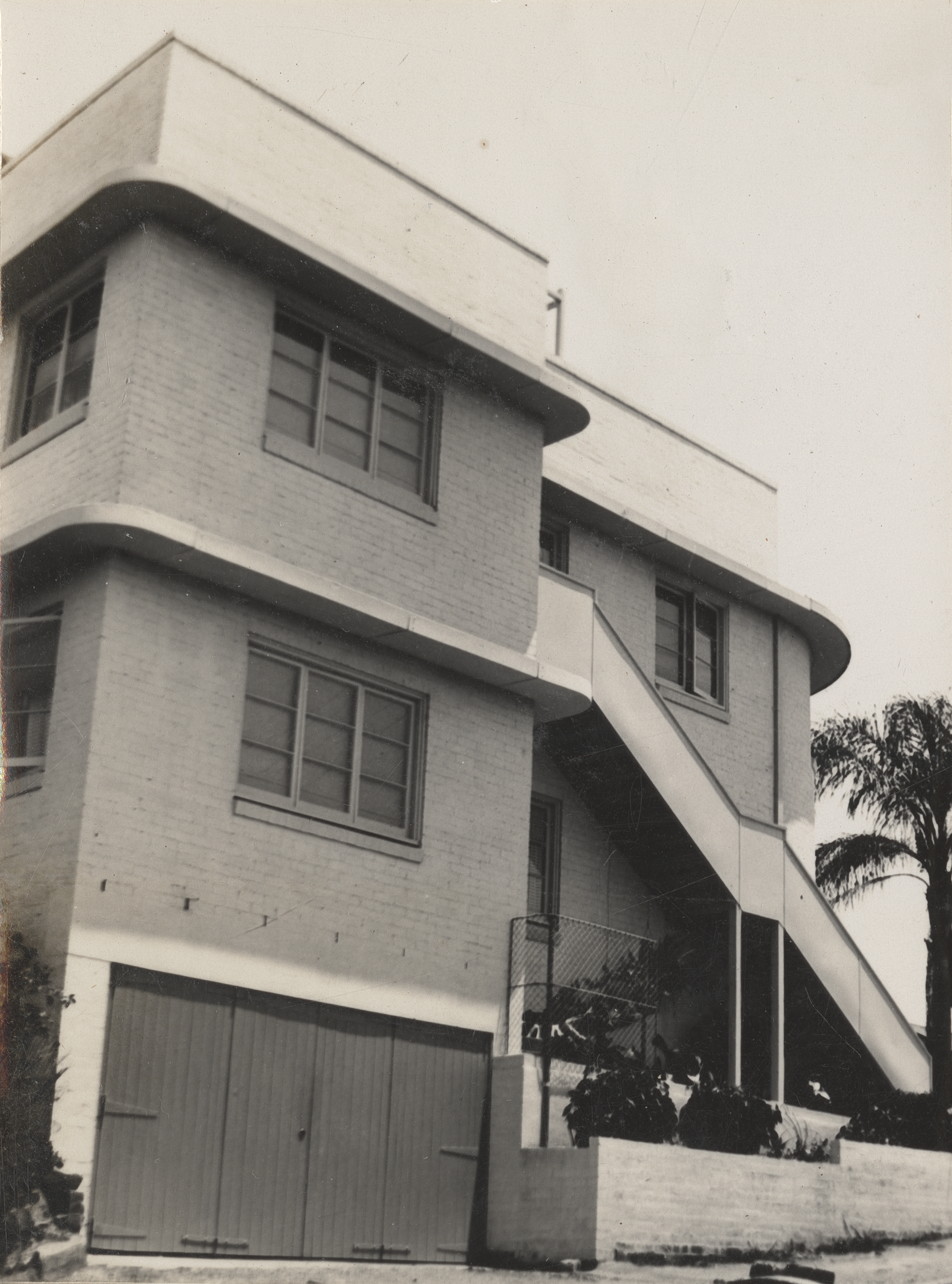Addresses
Type of place
Flat building
Period
Interwar 1919-1939
Style
Functionalist
Addresses
Type of place
Flat building
Period
Interwar 1919-1939
Style
Functionalist
This set of flats was built in 1939 for Frederick Wilson, a dental surgeon. The flats incorporate an older timber house which had been built in 1917 for the Wilsons and named ‘Wilbar’. The unusual decision to incorporate the older house into the, then, modern ‘Functionalist’ design of the flats posed a challenge for commissioned architect, EJA Weller. Built on a prominent hill overlooking Woolloongabba, the flats remain a landmark. They are important in demonstrating Brisbane’s development pattern in the interwar period and the way in which ideas about acceptable forms of housing were changing.
Lot plan
L9_RP12214
Key dates
Local Heritage Place Since —
Date of Citation —
Construction
Walls: Masonry - RenderPeople/associations
EJA Weller (Architect)Criterion for listing
(D) Representative; (E) AestheticInteractive mapping
Lot plan
L9_RP12214
Key dates
Local Heritage Place Since —
Date of Citation —
Construction
Walls: Masonry - RenderPeople/associations
EJA Weller (Architect)Criterion for listing
(D) Representative; (E) AestheticInteractive mapping
History
As the Great Depression progressed in the late 1920s and into the 1930s a marked deficit of housing in Brisbane emerged. This was the period in which the multi-unit dwelling began to emerge as an alternative to the traditional Brisbane house and yard. Prior to this in larger Australian cities such as Sydney and Melbourne this style of ‘modern’ living, in blocks of flats, had become a stylish alternative to living in the traditional house.
In the early 1930s to cater for the housing shortage as well as to generate income many home owners in the inner-city suburbs converted houses into tenements, where tenants would share bathrooms, toilets and kitchens. This led to community concerns of overcrowding and increased hygiene problems. A fashionable and more sophisticated alternative to this form of accommodation was the purpose built block of self-contained flats. Marketed mainly at single people and childless couples the earliest self-contained flats in Brisbane were generally conveniently situated close to trams, trains and shopping facilities in inner-city suburbs such as Spring Hill, New Farm and Fortitude Valley.
The Brisbane City Council, in 1930, defined the flat as “a fully self-contained dwelling, with private kitchen, bathroom and water closet”. The flat was designed to be an independently functioning dwelling. Although seen as a sophisticated lifestyle, flat living was fairly uncommon in Brisbane in this period, with only 8.4% of Brisbane residents living in flats. This low percentage may be due to the economic constraints of the time as well as the perceived novelty of this style of living. Most interwar flats in Brisbane were architecturally designed and constructed from good quality brick and timber.
Prior to the construction of the four flats, an earlier timber house had been built on the site by Frederick Wilson, who had acquired the land in 1917. In 1918 the Wilson family were first listed in the postal records on the corner of Hawthorne Street and Fleurs Road, confirming the house was built in 1917. The 1923 Metropolitan Water and Sewerage Detail Plan show the house on the corner named ‘Wilbar’.
The flats were designed by Edward J Weller, a young Brisbane architect who, after travelling overseas, helped introduce the latest European architectural style of Functionalism to Brisbane in the 1930s. This emerging style broke with past architectural traditions and often featured clean lines, simple geometric shapes and rounded corners.
Weller’s design was featured in the Courier Mail in May 1939 under the title of “Flats Over Old House”. The article highlighted the way Weller incorporated the timber house into the new masonry structure gracefully, “the addition is without marked architectural characteristics, so that disparity between the old and the new forms and materials is as little marked as possible” (The Courier Mail, 9 May 1939, p4). The accepted contractors for the work were Ashlar Building and Construction Co. and EW Crowther.
Once completed, the four flats were once again featured in the Courier Mail in an article addressing the challenge of converting an old and uneconomical house, into flats that yield a profit, “this modern block of flats demonstrates how simply the problem of “what to do” with an old building can be solved. On this site that this handsome brick structure now occupies formerly stood an old wooden building, very large, but uneconomical to the owners” (The Courier Mail, 13 February 1940, p21). It is apparent, due to the media attention, that the melding of the older house into the modern structure was an unusual way to establish a set of flats.
The flats hold a very prominent position on the apex of Hawthorne Street. This was accentuated in the late 1960s with the construction of the Riverside Expressway (now known as the South East Freeway) which was cut through Hawthorne Street to the east of the flats. When driving along the expressway toward the south, the set of flats can clearly be seen from the road below as they hold an important landmark position.
Description
This set of rendered brick flats is situated prominently on the corner of Hawthorne and Fleurs streets and holds a landmark position high above the South East Freeway. The flats display many elements of ‘Functionalist’ interwar architecture. At the rear of the flats, the original 1917 timber residence has been incorporated into the 1930s front extension. Many of the interwar interior features remain.
Statement of significance
Relevant assessment criteria
This is a place of local heritage significance and meets one or more of the local heritage criteria under the Heritage planning scheme policy of the Brisbane City Plan 2014. It is significant because:
Supporting images

Unknown photographer,
‘Wilbar apartments at Woolloongabba', undated,
John Oxley Library, State Library of Queensland.
The house, located at the corner of Hawthorne and Fleurs Streets, was designed by architect Edward James A. Weller. (Description supplied with photograph)

Unknown photographer,
‘View of the Wilbar apartments at Woolloongabba', undated,
John Oxley Library, State Library of Queensland.
The house, located at the corner of Hawthorne and Fleurs Streets, was designed by architect Edward James A. Weller. (Description supplied with photograph)

E.J.A. Weller (artist),
'Flats Over Old House',
The Courier-Mail (Brisbane, Qld. : 1933 - 1954), 9 May 1939, p. 4,
viewed 2 October 2019, http://nla.gov.au/nla.news-article40832634
References
-
The Courier Mail, 9 May 1939, p4
-
The Courier Mail, 13 February 1940, p21
-
Brisbane City Council Minutes, 1935-36, p.764 & 918 and 1938, p.605
-
Brisbane City Council Metropolitan Water Supply and Sewerage Board, Detail Plans
-
Brisbane City Council, 1946 aerial photographs.
-
Certificates of Title, Department of Environment and Resource Management
-
Queensland Post Office Directories
-
Queensland Electoral Rolls
Citation prepared by — Brisbane City Council (page revised September 2020)


